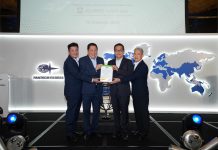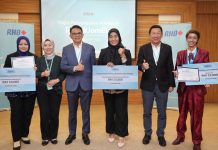Penang Institute and Research for Social Advancement (REFSA), with support from Invest Penang, recently hosted a semiconductor study tour in Malaysia’s northern region, focusing on Penang and Kulim’s factories and industry players.
The tour aimed to deepen understanding of semiconductor geo-economics, the chip-making process, and the pivotal role of Penang-Kulim in this sector. Additionally, it sought to deliberate on Malaysia’s national policies and incentives to enhance its position in the semiconductor industry within ASEAN.
The timing of the visit was strategic, coinciding with Malaysia’s need to craft a proactive, neutral strategy amid geopolitical trade conflicts centered around chip dominance, according to RFSA in a statement.
One key takeaway was Malaysia’s advantage from its 50-year mature ecosystem in test, assembly, and packaging, providing a platform for further expansion into high-value areas of chipmaking.
However, talent emerged as a primary constraint, underscoring the necessity for collective action to address this issue and reshape Malaysia’s narrative beyond low-cost production to emphasize quality talent, ease of business, and supply chain security through collaborative efforts across government, private sector, and academia.
The study tour brought together policymakers and thought leaders from Southeast Asia, including notable figures like Penang deputy minister YB Liew Chin Tong and Professor Tetsuya Watanabe of ERIA.
Representatives from local government agencies and key stakeholders participated, emphasising the broad interest and importance of the tour.
Over three days, participants engaged with more than ten industry players across the semiconductor ecosystem, including major international firms like OSRAM, Lam Research, Intel, and local champions such as ViTrox and Inari. The tour highlighted Malaysia’s unique position to attract semiconductor businesses seeking to expand manufacturing capabilities and innovate supply strategies.
Major multinational companies cited Malaysia’s mature ecosystem as a primary reason for locating facilities in Penang and Kulim, emphasizing the need to deepen integration between multinational and domestic companies, enhance local content in exports, and expand R&D activities.
Talent availability emerged as a critical global challenge, prompting collaboration between industry and academia to bridge skill gaps.
The study tour identified opportunities in addressing supply chain gaps and advancing semiconductor chip design and fabrication capabilities. Collaboration between industry, government, and academia was emphasized to build a robust advanced packaging ecosystem.
As such, the study tour provided valuable insights to reconsider policies and implementation strategies. It underscored the imperative for Malaysia to bolster domestic capacity and capitalize on existing opportunities in the semiconductor sector.
























